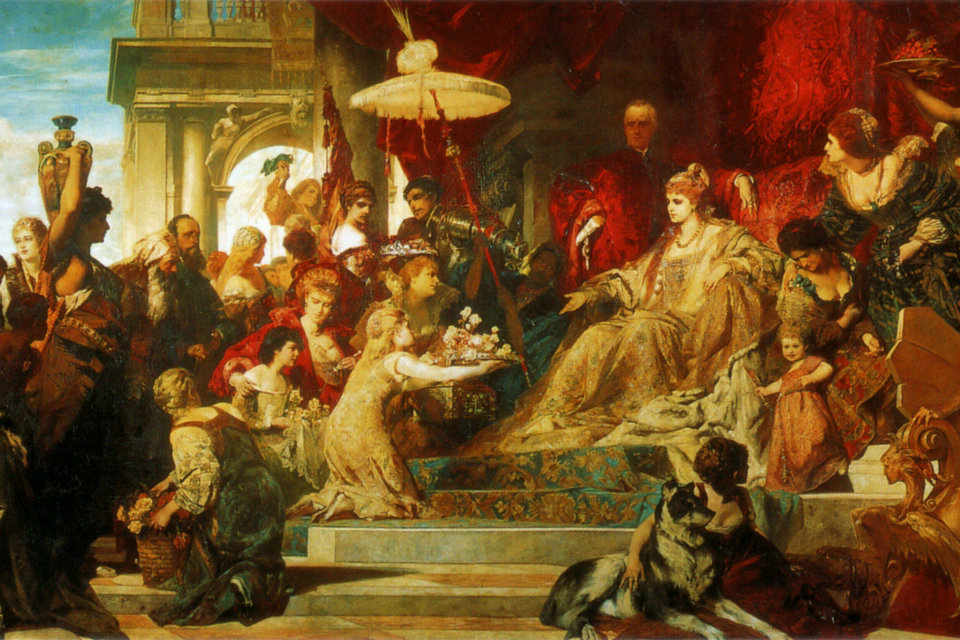Romanticism is best revealed through literature. Literary romanticism may be traced back to the mid-eighteenth century—to novels of “sensibility” like Rousseau’s La Nouvelle Héloïse and to the sentimental “tearful comedies” of the French stage. In the 1770s and 1780s a new intensity appeared in the very popular works of the German Sturm and Drang, for example, Goethe’s morbidly sensitive Sorrows of Young Werther, and The Robbers, a drama of social protest by J. C. E von Schiller (1759-1805).
Goethe (1749-1832) was a good eighteenth-century exponent of reason, yet romantic values lie at the heart of his most famous writings—his short lyrics and, above all, Faust. Begun when Goethe was in his twenties and finished only when he was eighty, this long poetic drama was a philosophical commentary on the main currents of European thought.
According to the traditional legend, the aged Faust, weary of book learning and pining for eternal youth, sold his soul to the Devil, receiving back the enjoyment of his youth for an allotted time, and then, terror-stricken, going to the everlasting fires.
Goethe partially transformed this legend: Faust makes his same infernal compact with Mephistopheles, who points out how disillusioning intellectual pursuits are, but Faust is ultimately saved through his realization that he must sacrifice selfish concerns to the welfare of others. A drama of sinning, striving, and redemption, Goethe’s Faust reaffirmed the Christian values that the Enlightenment had belittled.
The Enlightenment had also belittled any poetry except that following very strict forms, like the heroic couplets of Racine and Pope. The romantics decried this neoclassicism as artificial and praised the vigor, color, and freedom of the Bible, Homer, and Shakespeare. The result was a great renaissance of poetry all over Europe, especially in England, which produced a galaxy of great poets: Lord Bryon (1788-1824), Percy Bysshe Shelley (1792-1822), John Keats (1795-1821), William Wordsworth (17701850), Samuel Taylor Coleridge (1772-1834), and others.
Of them all, Wordsworth and Coleridge pressed furthest in their reaction against classicism and rationalism. In 1798 the two men published Lyrical Ballads, to which Coleridge contributed the “Rime of the Ancient Mariner,” a supernatural tale of the curse afflicting a sailor who slays an albatross. Later he created “Kubla Khan,” which has a surrealistic quality and probably was induced by taking drugs. In place of a mathematically ordered world- machine, Coleridge’s “Kubla Khan” has its Xanadu:
Where Alph, the sacred river, ran
Through caverns measureless to man
Down to a sunless sea.
Wordsworth, who had lived in France during the early years of the Revolution and had been disillusioned by the failure of rational reform, abandoned the philosophes’ confidence in human perfectibility through reason to put his faith in the “immortal spirit” of the individual. In place of the light shed by Newton’s laws, he found “a dark inscrutable workmanship.” God was to be found in all things.

